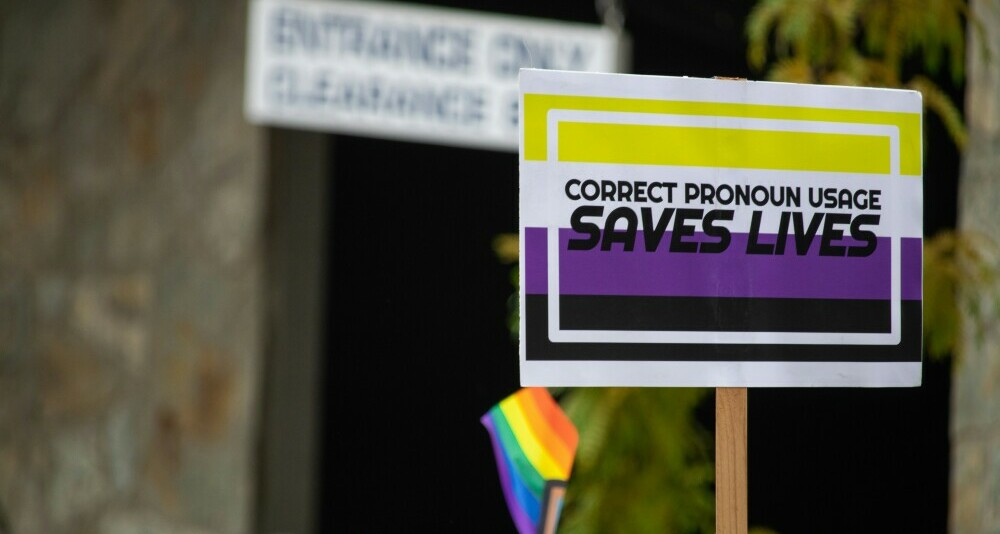Nowadays, the third-person pronoun one is seldom used, except by the upper classes and in certain academic writing because of its formal tone. However, it has a unique role as a pronoun that allows it to be used in a way that encompasses the experience of any individual, and with the increase of controversy over masculinising or feminising pronouns, it is regaining popularity.

The following are some of the uses of the pronoun one.
Generic pronoun
As a generic pronoun, one is used to refer to people in general. It is a third person singular pronoun, along with he, she and it, but is often used in formal or academic contexts to make statements that apply to anyone of a plurality of people, not a specific person.
- One should always strive to do one’s best.
- One feels one is being looked at.
In the above example, one serves as a substitute for any person or individual of unspecified gender.
Nowadays, it is common to hear or read:
- You should always do your best.
- You feel like you‘re being looked at.
Although you is a second person pronoun, it is frequently used in this type of context: not referring to the second person but to anyone in general. It tends to be used in preference to one because it avoids what by many is perceived as a snobbish tone.
So, one is often used to avoid the repetition of you, and it is particularly used in formal writing, such as essays or speeches.
One is used both as a subject and object pronoun:
- One looks for answers.
- Answers find one.
The possessive form is one’s:
- One does one’s best.
- One should be careful with one’s belongings.
The reflexive form is oneself, a pronoun used for emphasis or to reflect back on the subject, which should not be confused with the possessive form one’s self, which refers to the self or identity of a person:
Oneself: One must believe in oneself to succeed.
One’s self: Understanding one’s self is crucial for personal growth.
- One looks at oneself in the mirror.
- One must prepare oneself for the challenges ahead.
The above sentences correctly use oneself because:
- When one looks at oneself in the mirror, oneself reflects back on the subject one.
- When one must prepare oneself for the challenges ahead, oneself again reflects back on the subject one.
Using oneself emphasises the subject’s own action or preparation.

Indefinite pronoun
One can also function as an indefinite pronoun, meaning ‘a person’ or ‘any person’. It is used when the identity of the person is unknown or irrelevant.
- One never knows what the future holds.
In this example, one refers to an unspecified person.
It is similar to the generic pronoun usage but is often interchangeable with someone or anyone.
- One might think that life is unfair.
- If one loses a key, one should contact the building manager.
Numerical pronoun
Of course, one can also represent the number one. As a numerical pronoun, one simply refers to the number 1. It can be used in various contexts, such as counting, specifying a single item or differentiating between items:
- There is only one solution to this problem.
This usage is straightforward and is used in everyday language to denote singularity or uniqueness. It is principally used in mathematical contexts.
- I have one brother.
- She only bought one apple.

As a substitute for a noun previously mentioned
One can also be used as a pronoun to avoid repeating a noun that has already been mentioned. This use is common in conversational and written English.
- I have two dogs. One is a Labrador and the other is a Beagle.
- I love these flowers and that red one is particularly beautiful.
In these examples, one substitutes for “dog” and “flower” and helps to avoid redundancy in sentences.
One can also be used with adjectives to specify which noun is being referred to:
- She has three cars. One is red, one is blue and one is green.
- Q. Would you like a biscuit? A. Yes, thank you. I’ll take one.
As a pronoun with ‘the’
The one can be used to refer to a specific person or thing within a group. It helps to single out a particular item or individual.
- The one who called you is my friend.
In this instance, one is used to specify and differentiate, and it often follows a defining clause or phrase:
- Out of all the options, this is the one that I prefer.
- The one that got away.
Idiomatic expressions
One is also part of various idiomatic expressions in English:
- One by one (Sequentially, one at a time)
- The children entered the room one by one.
- All in one (Combined into a single unit)
- This gadget is an all-in-one tool.
- At one with (In harmony with)
- She felt at one with nature.
Idiomatic expressions often have meanings that are not directly deducible from logic or their individual words.

Emphatic use
Finally, one can be used for emphasis, often in formal or literary contexts:
- One does not simply walk into Mordor.
…as opposed to the weaker:
- No one simply walks into Mordor.
Or:
- One cannot deny the importance of education.
…as opposed to the weaker:
- The importance of education cannot be denied.
This emphatic use of one adds a formal and authoritative tone to text or speech.
Conclusion
The pronoun one is distinguished from other pronouns in the English language because its role is to raise the tone of a sentence. It adds class, authority and formality. In addition to this, the pronoun one has the important function of retaining gender neutrality.
The pronoun one has a variety of uses such as a generic pronoun, an indefinite pronoun, a numerical pronoun or as a substitute for previously mentioned nouns. Furthermore, one can be part of idiomatic expressions or added to a sentence for emphatic use.
If you have any questions or comments, please do enter them below.
BIBLIOGRAPHY
Crystal, David. The Cambridge Encyclopedia of the English Language, 3rd edn (Cambridge University Press, 2019)
Dreyer, Benjamin. Dreyer’s English: An Utterly Correct Guide to Clarity and Style (Penguin Random House, 2020)
Gwynne, N. M. Gwynne’s Grammar: The Ultimate Introduction to Grammar and the Writing of Good English (Ebury Press/Random House, 2013)
Hewings, Martin, and others. Cambridge English Grammar and Vocabulary for Advanced (Cambridge University Press, 2015)
Huddleston, Rodney, and others. The Cambridge Grammar of the English Language (Cambridge University Press, 2002)
Parrott, Martin. Grammar for English Language Teachers, 2nd edn (Cambridge University Press, 2011)
Quirk, Randolph, and others. A Comprehensive Grammar of the English Language, reprint edn (Pearson, 2011)
Woodroof, David K. Quotations, Commas and Other Things English, instructor’s reference edn (iUniverse, Inc, 2007)
New Hart’s Rules: The Handbook of Style for Writers and Editors (Oxford University Press, 2005)
https://dictionary.cambridge.org/dictionary/english/